Noticed those little dimples on your legs and felt awkward in shorts or a swimsuit? You are not alone. Cellulite is common, and it is not a life sentence. You can change how it looks with the right plan.
Here is the quick truth. No workout erases cellulite for good. But the right moves can make legs look smoother by building muscle, burning fat, and boosting circulation. That is the heart of how different exercises affect cellulite on legs.
Strength training tightens the tissues under the skin, so bumps show less. Cardio helps reduce overall body fat, which softens the look. Mobility work and massage-like techniques support lymph flow, which can ease puffiness.
In this post, you will learn what causes cellulite, how it responds to training, and which exercises give you the best payoff. We will cover simple strategies you can start today, how often to train, and small habits that support results. You will also see how to set real expectations, so you stay consistent.
If you want legs that feel firm and look smoother, you are in the right place. Stick with a plan, track small wins, and give it a few weeks. Your skin can look better, your legs can get stronger, and your confidence can grow.
Understanding Cellulite on Your Legs: Causes and Myths
Cellulite is normal. It shows up as small dimples on thighs, butt, and calves. You can improve how it looks when you understand what drives it and what does not.
What Cellulite Really Is
Cellulite happens when pockets of fat press up through a web of connective tissue under your skin. That push creates the dimpled look you see on the surface. It is not a disease. It is a structure and texture issue.
Why Legs Are Prone
Leg skin is often thinner, and the area stores more fat, so texture shows more. Gravity adds to the effect, pulling on tissues that are already tight and grid-like. That is why thighs and buttocks tend to show dimples first.
Main Causes You Can Influence
Many factors add up. Some you cannot change, others you can.
- Hormones: Estrogen, insulin, and stress hormones affect fat storage and fluid balance.
- Genetics: Your skin thickness, fat pattern, and collagen type run in families.
- Diet: High salt, low protein, and low fiber can make puffiness worse.
- Lack of exercise: Less muscle and more body fat make texture more visible.
- Poor circulation: Sitting a lot or tight clothing may slow blood and lymph flow.
Small daily choices help. Drink water, eat lean protein and fiber, and move often.
Common Myths to Drop
- Myth: Only overweight people get cellulite. Truth: Many lean people have it.
- Myth: Creams erase cellulite. Truth: They may reduce puffiness, not rebuild tissue.
- Myth: Spot-reducing is possible. Truth: You cannot burn fat from only your thighs.
How Exercise Changes the Picture
Here is how different exercises affect cellulite on legs. Strength training builds firm muscle under the skin, so dimples show less. Cardio helps reduce overall body fat, which softens the look. Mobility work and circulation boosters, like walking breaks or light massage, can reduce fluid buildup. Learn this, then pick workouts that tone, burn, and move. That is how you get smoother legs over time.
Top Exercises and How They Affect Cellulite on Legs
Here is the clear picture of how different exercises affect cellulite on legs. Cardio lowers overall body fat, so dimples show less. Strength work builds muscle that firms the surface. Flexibility moves and yoga boost blood flow and ease fluid buildup, which can smooth texture. You do not need a perfect plan, you need a repeatable one. Aim for small, steady sessions that stack up week after week.
Cardio Workouts: Burning Fat to Fade Cellulite
Cardio targets the bigger driver of visible cellulite, extra body fat. When you raise your heart rate, you burn calories during the workout and often move more during the day. Over time, lower body fat means less pressure pushing up against the skin’s support structure, so texture looks smoother.
A simple target works well. Do 30 minutes of moderate cardio, 3 to 5 days per week. You should be able to talk in short sentences, not sing. This level improves circulation to your legs, supports fat loss, and tones without adding bulk.
Good options:
- Running or jogging outside, treadmill if you prefer
- Cycling, indoor or outdoor
- Brisk walking with a slight incline
- Jumping jacks for short bursts
- Stair climbing at home or on a machine
Studies show regular aerobic training reduces body fat percentage, which indirectly improves skin texture. Think of it like turning down background noise so the dimples stand out less. Beginners can start with 10 to 15 minute walks and add 5 minutes each week. Use intervals if you get bored: 1 minute faster, 2 minutes easy, repeat. Choose shoes and foot pads that feel good, set a route you enjoy, and track sessions to stay consistent.
Strength Training: Building Muscle for Firmer Legs
Strength training changes the shape under your skin. When you build muscle in your quads, hamstrings, and glutes, it fills out the area and supports the skin. That lift reduces the shadowing that makes cellulite stand out. Muscle also burns more calories at rest, which helps long term fat control.
Focus on simple moves that hit big muscles. Use bodyweight or light dumbbells, and slow, controlled reps. Try 2 to 3 sets of 10 to 15 reps, two or three days per week, with a rest day between.
Smart picks:
- Squats, bodyweight or with a light dumbbell
- Reverse lunges or walking lunges
- Hip thrusts or glute bridges
- Step-ups onto a stable bench or stair
- Leg press if you have gym access
- Calf raises for lower leg tone
Keep form tight. Drive through your heels, keep knees tracking over toes, and brace your core. As these moves get easier, add a small weight or one extra set. Research supports resistance training for increasing lean mass and improving body composition. More muscle usually means smoother contours. If you are short on time, use a mini circuit: squats, glute bridges, lunges, rest 60 seconds, repeat. Strength training is your sculpting tool, steady and reliable.
Flexibility Moves and Yoga: Enhancing Circulation and Skin Health
Tight tissues can trap fluid and restrict blood flow around the thighs and hips. Flexibility work and yoga open those areas, which helps nutrients reach the skin and fascia. Better circulation supports collagen and elasticity, while gentle compression in poses encourages lymph flow. Less fluid buildup can make the surface look more even.
Set aside 20 minutes, three or four days a week, and focus on the legs and hips. Hold each pose for 30 to 60 seconds and breathe slowly. Use a strap or blocks if needed.
Useful poses and stretches:
- Warrior II, strong legs with open hips and steady breath
- Downward dog, lengthens calves and hamstrings
- Low lunge with a hip flexor stretch
- Figure-four stretch on your back for glutes
- Seated hamstring stretch with a neutral spine
- Standing quad stretch, hold a wall for balance
Yoga also helps reduce stress, which can influence hormones tied to fat storage and water retention. A calmer nervous system often means less puffiness and better recovery from hard workouts. Keep it gentle, no forced stretches. Aim for a smooth flow: low lunge to downward dog, then warrior II on each side. On rest days, a short mobility session keeps legs fresh and ready for your next run or strength workout. Pair this with hydration and a balanced plate, and you support the skin from the inside out.
In short, cardio trims, strength firms, and flexibility refreshes. Blend all three, keep sessions short and repeatable, and expect steady change over weeks, not days.
Tips for an Effective Anti-Cellulite Leg Routine and Lasting Results
You want smoother legs and a routine that actually sticks. Start with a simple plan that blends cardio, strength, and recovery. Keep the focus on what you can control. This ties directly to how different exercises affect cellulite on legs, and how your daily habits support change.
Build a Weekly Plan
Aim for short, repeatable sessions. Four focused days work well.
- 2 days strength for lower body and core
- 2 days cardio at a moderate pace
- 1 to 2 short mobility or yoga sessions
A sample week:
- Monday: Strength legs and glutes, 30 to 40 minutes
- Tuesday: Cardio, 30 minutes brisk walk or cycling
- Thursday: Strength legs and core, 30 to 40 minutes
- Saturday: Cardio intervals, 25 to 30 minutes
Stick to a full-body approach. Spot reduction is a myth.
Nutrition and Hydration
What you eat changes how your legs look over time.
- Protein at each meal supports muscle and keeps you full
- Choose high fiber carbs and colorful veggies
- Cut added sugar and heavy alcohol
- Keep sodium moderate to reduce puffiness
- Drink water across the day, not all at once
Recovery That Keeps Legs Fresh
Recovery shapes results as much as workouts.
- Foam rolling quads, hamstrings, IT band, and calves, 5 to 10 minutes
- Light walking on rest days to keep blood and lymph moving
- 7 to 9 hours of sleep for better hormone balance
- Gentle stretching for hips, glutes, and hamstrings
Track and Stay Consistent
Measure what matters so you notice progress.
- Take photos every two weeks in the same light
- Track workouts, steps, and how clothes fit
- Note energy and sleep so you catch patterns
Set Real Expectations and Stay Safe
You can see smoother texture in 4 to 6 weeks with steady work. Keep building muscle, lowering body fat, and supporting circulation. If you have pain, a medical condition, or are pregnant, talk with your doctor for a plan that fits your needs. Stay patient, keep sessions short and doable, and results follow.
Conclusion
You have the tools to change what you see and feel. You now know how different exercises affect cellulite on legs, and why a simple blend works best. Cardio trims body fat and boosts blood flow. Strength training builds firm muscle that supports the skin. Yoga and mobility ease tight tissues, help circulation, and reduce puffiness.
Keep your plan simple and steady. Two strength days, two cardio days, plus short mobility sessions create momentum you can maintain. Eat enough protein, stay hydrated, and sleep well to support recovery and collagen. Track small wins, like better muscle tone or fewer dimples in certain light. Progress often shows in weeks, not days, so stay the course.
Pick one exercise to try this week, then add another next week. Share what you notice in the comments, like which move felt best or where you saw a small change. Small choices stack up, and your legs respond when you show up. Stay consistent, give yourself time, and let the results build.
FAQ: How Different Exercises Affect Cellulite on Legs
Can exercise get rid of cellulite on legs?
Exercise does not erase cellulite, but it can reduce its look. Less body fat, more muscle, and better blood flow usually make dimples less visible. Strong legs also help skin look tighter.
Which type of exercise helps most, cardio or strength?
Both help for different reasons. Cardio burns calories and improves circulation. Strength training builds muscle under the skin, which can smooth the surface. Pair them for the best change in appearance.
Do squats and lunges reduce cellulite?
They do not remove cellulite, but they improve shape and firmness. Squats and lunges build quads, hamstrings, and glutes, which can smooth the area. Add tempo changes or weights for better results.
Are glute exercises important for thigh cellulite?
Yes. Strong glutes lift and support the thigh area, which can reduce dimpling. Include hip thrusts, step-ups, Romanian deadlifts, and cable kickbacks.
Does walking help, or is it too light?
Walking helps circulation and daily calorie burn. It supports fat loss over time, which can soften the look of cellulite. Brisk, incline, or longer walks give more benefit.
Is cycling good or bad for cellulite?
Cycling trains quads and glutes and boosts blood flow. It can improve leg tone and reduce puffiness. Add standing climbs or intervals to hit more muscle fibers.
What about HIIT for cellulite?
HIIT raises energy burn in less time and may help reduce fat. It improves insulin sensitivity and blood flow, which can help the skin look smoother. Keep sessions short, 10 to 25 minutes, 2 to 3 times per week.
Do plyometrics make dimples worse or better?
Plyometrics, like jump squats and box jumps, build power and improve tissue spring. They can help firm the legs if joints tolerate them. Start small and keep good form to avoid strain.
Can heavy lifting help more than light weights?
Heavy lifting builds more muscle, which can fill out and firm the area. Use controlled reps and full range of motion. Combine heavy sets with moderate reps for a balanced plan.
Will building muscle make cellulite look bigger at first?
Sometimes, yes. New muscle can push against soft tissue before fat drops, which may make dimples more visible. As fat decreases and skin adapts, the look often improves.
Do Pilates and yoga help with cellulite?
They do not melt fat, but they improve posture, core support, and muscle endurance. Better alignment and movement quality can make legs look smoother. Add them to cardio and strength, not instead of them.
Does stretching or mobility work change cellulite?
Stretching does not change fat or fibrous bands, but it helps tissue glide and reduces stiffness. Better mobility improves how muscles contract, which supports firmer tone. Use dynamic warm-ups and post-workout stretches.
Can foam rolling or massage reduce cellulite?
They can reduce fluid buildup and improve short-term smoothness. Effects are temporary unless paired with training and nutrition. Roll calves, quads, hamstrings, and IT band areas with gentle pressure.
How often should I train legs to see changes?
Aim for 2 to 3 strength sessions for legs each week, with at least one day of rest between. Add 150 to 300 minutes of moderate cardio or 75 to 150 minutes of vigorous cardio weekly. Stay consistent for 8 to 12 weeks to judge results.
Which exercises target inner thigh dimples?
Use sumo squats, side lunges, Cossack squats, and adductor machine work. Combine with glute training to balance the hip. Tension on the inner thigh improves shape and support.
What helps the back of the thighs and hamstrings?
Romanian deadlifts, hamstring curls, bridges, and step-ups. Train through full range, slow on the way down, strong on the way up. Pair with incline walking or hill sprints for extra hamstring work.
Do calves matter for thigh cellulite?
Yes, lower leg tone affects overall leg shape and venous return. Add calf raises, jump rope, and incline walking. Better circulation can reduce fluid pooling.
Can I spot reduce cellulite with targeted moves?
No. You can target muscles, not fat. Reduce overall body fat with training and smart eating, then shape the area with strength work.
How long until exercise changes are visible?
Small changes can show in 4 to 6 weeks, bigger changes in 12 to 16. It depends on starting body fat, training load, and consistency. Photos and measurements track progress better than the scale alone.
Does age change how exercise affects cellulite?
Collagen drops with age, and skin gets thinner, so dimples can look deeper. Strength training and protein intake help maintain muscle and firmness. Progress may be slower, but it still happens.
Are results different for hormone changes, like postpartum or perimenopause?
Shifts in estrogen affect fat storage and fluid balance. Exercise still helps, though you may need more strength work and protein, and steady cardio. Manage stress and sleep for better tissue recovery.
What weekly plan gives the best odds of smoother legs?
- Two lower body strength days, quads and glutes on one day, hamstrings and glutes on another
- One full body day with compound lifts
- Two or three cardio sessions, mix steady and intervals
- Daily walking and short mobility work
- Foam rolling 2 to 3 times per week
Any red flags or mistakes to avoid?
Only doing cardio, skipping protein, or never training close to fatigue slows progress. Overdoing HIIT or plyos can cause swelling that makes skin look puffier. Be patient, track workouts, and adjust every 4 weeks.


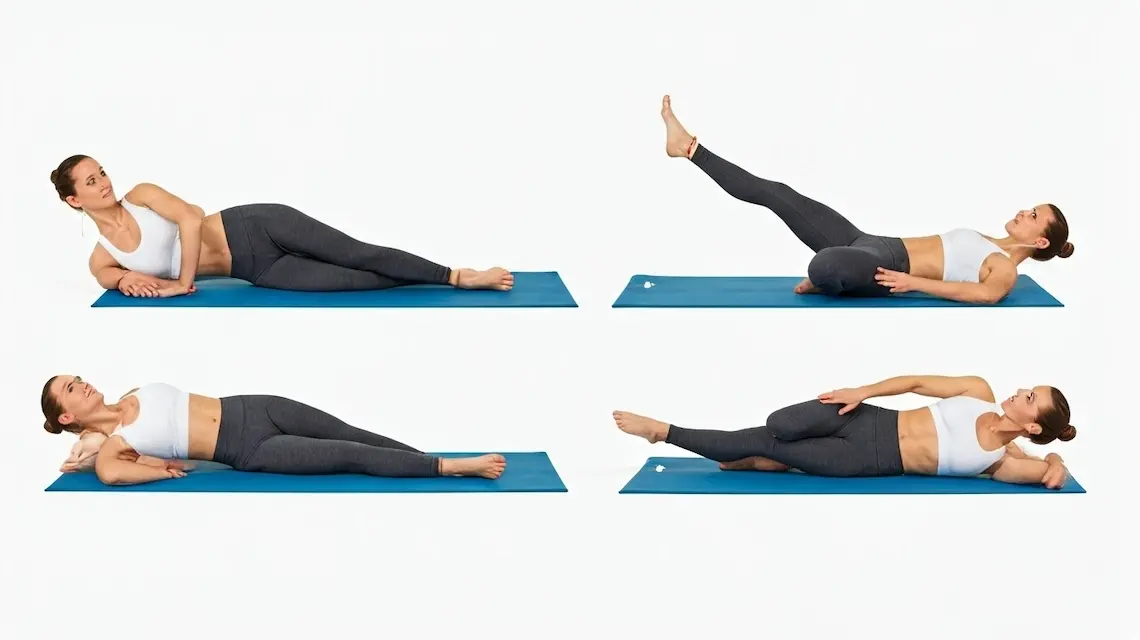
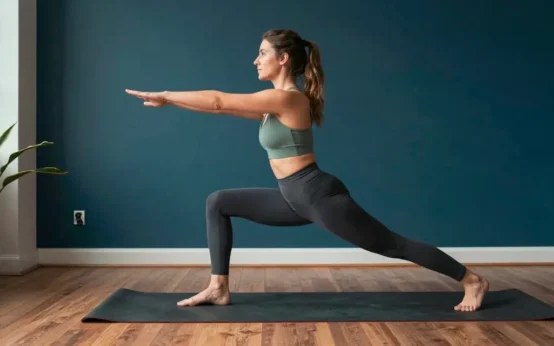 Beginner Cardio Workout at Home
Beginner Cardio Workout at Home 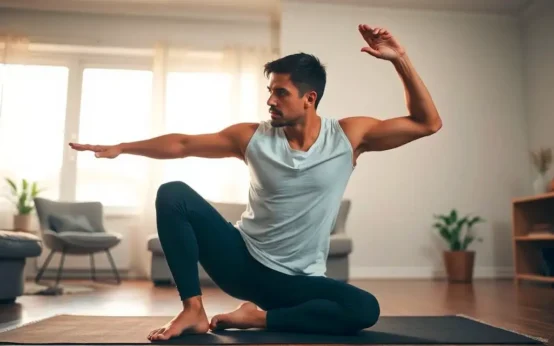 10 Stretching Exercises to Increase Height
10 Stretching Exercises to Increase Height 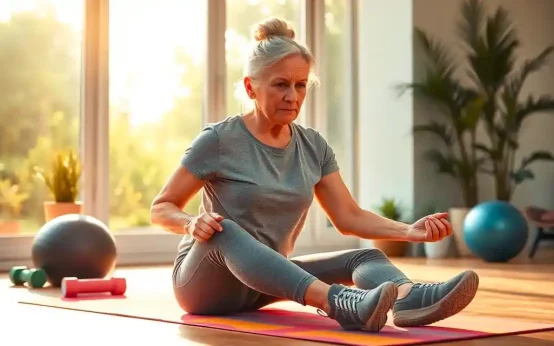 Menopause Workout: A Simple, Strong Plan
Menopause Workout: A Simple, Strong Plan 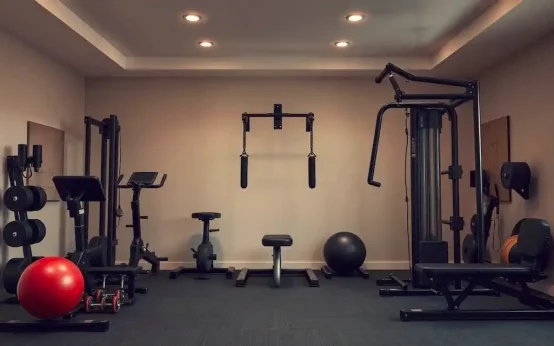 Best Home Gym Workout Equipment
Best Home Gym Workout Equipment 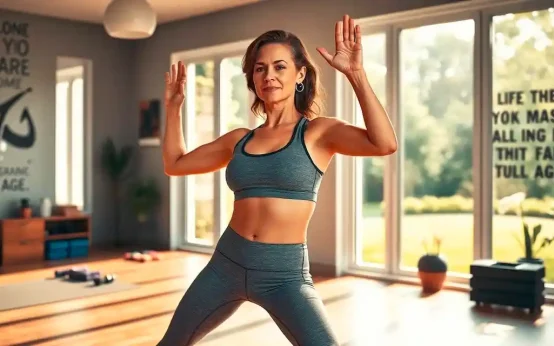 Exercise Tips Help You Look Great for Your Age
Exercise Tips Help You Look Great for Your Age 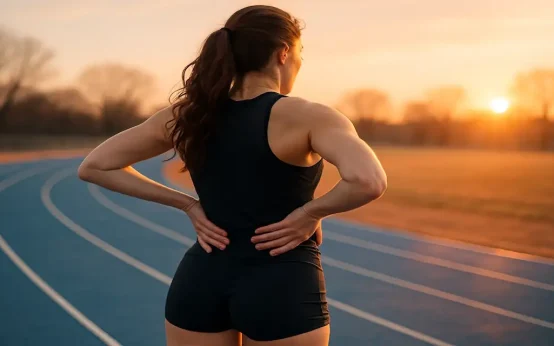 How to Stay Active With Back Pain
How to Stay Active With Back Pain